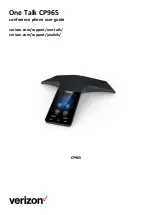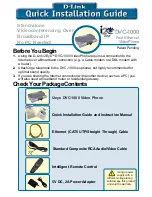
Engineering Guidelines
164
LICENSING LIMITS
Available resources determine if license limits can be achieved. For example, if there is
insufficient DSP for voice mail, the operational limit may be reached before the license limit.
Be very careful with large numbers of licenses for voice mail and compression. Because DSP
resources are allocated at initialization based on license numbers, not traffic requirements, it
is possible to allocate all DSP resources and have nothing left for telecom tone receivers and
generators, so calls cannot be made on the system. The table below shows limitations to the
licenses.
Table 44: License limits
LICENSE TYPE
MAXIMUM LIMIT
IP device license (MCD 4.0 and earlier)
1
5600
IP user license
5600
2
SIP user license (MCD 4.0 and earlier)
1
5600
2
SIP trunking license
2000
T.38 Fax Over IP.
Maximum of 64 licenses (recommended limit 48)
Compression license
64 licenses (256 channels on 2 DSP-II modules)
Analog line license
5000
Voice mail license
750 (includes advanced VM licenses)
Mailbox license
cannot exceed the maximum number of user voice mailboxes
available (up to 750)
ACD Agent license
2100 (the limit for active agents is much lower, depending on the type
of controller – refer to Table 1)
Digital Link license
16
IP networking (IP trunk) license
Y/N
X-NET license
Y/N
Advanced Voice Mail license
Y/N
Hospitality / PMS license
Y/N
Voice Mail Networking license
Y/N
Tenanting license
Y/N
Note 1
: Effective Release 10.1 (MCD 4.1), the IP device license and SIP user license are dropped, and their
functionality is merged into the IP user license.
Note 2:
In MCD 4.0, the combined total of IP user licenses and SIP user licenses cannot exceed 5600.
Summary of Contents for MiVOICE BUSINESS
Page 1: ...Mitel MiVoice Business RELEASE 7 2 ENGINEERING GUIDELINES ...
Page 15: ...Chapter 1 ABOUT THIS DOCUMENT ...
Page 16: ......
Page 22: ...Engineering Guidelines 8 ...
Page 23: ...Chapter 2 SYSTEM OVERVIEW ...
Page 24: ......
Page 28: ...Engineering Guidelines 14 ...
Page 29: ...Chapter 3 TYPICAL CONFIGURATIONS ...
Page 30: ......
Page 73: ...Chapter 4 PHONES AND VOICE APPLICATIONS ...
Page 74: ......
Page 95: ...Phones and Voice Applications 81 Figure 9 ICP Connection Paths and Limitations ...
Page 100: ...Engineering Guidelines 86 ...
Page 101: ...Chapter 5 POWER ...
Page 102: ......
Page 128: ...Engineering Guidelines 114 ...
Page 129: ...Chapter 6 PERFORMANCE ...
Page 130: ......
Page 135: ...Chapter 7 APPLICATIONS ...
Page 136: ......
Page 142: ...Engineering Guidelines 128 ...
Page 143: ...Chapter 8 EMERGENCY SERVICES ...
Page 144: ......
Page 151: ...Chapter 9 IP NETWORKING ...
Page 152: ......
Page 167: ...Chapter 10 LICENSING ...
Page 168: ......
Page 183: ...Chapter 11 BANDWIDTH CODECS AND COMPRESSION ...
Page 184: ......
Page 209: ...Chapter 12 NETWORK CONFIGURATION CONCEPTS ...
Page 210: ......
Page 244: ...Engineering Guidelines 230 ...
Page 245: ...Chapter 13 NETWORK CONFIGURATION SPECIFICS ...
Page 246: ......
Page 309: ...Appendix A CAT 3 WIRING ...
Page 310: ......
Page 315: ...CAT 3 Wiring 301 Figure 55 CX MX MXe AX and LX Minimum Cable Standard ...
Page 316: ...Engineering Guidelines 302 ...
Page 317: ...Appendix B INSTALLATION EXAMPLES ...
Page 318: ......
Page 335: ...Appendix C LLDP AND LLDP MED CONFIGURATION EXAMPLES ...
Page 336: ......
Page 347: ...Appendix D VOIP AND VLANS ...
Page 348: ......
Page 353: ...Appendix E VOIP SECURITY ...
Page 354: ......
Page 381: ... ...
















































